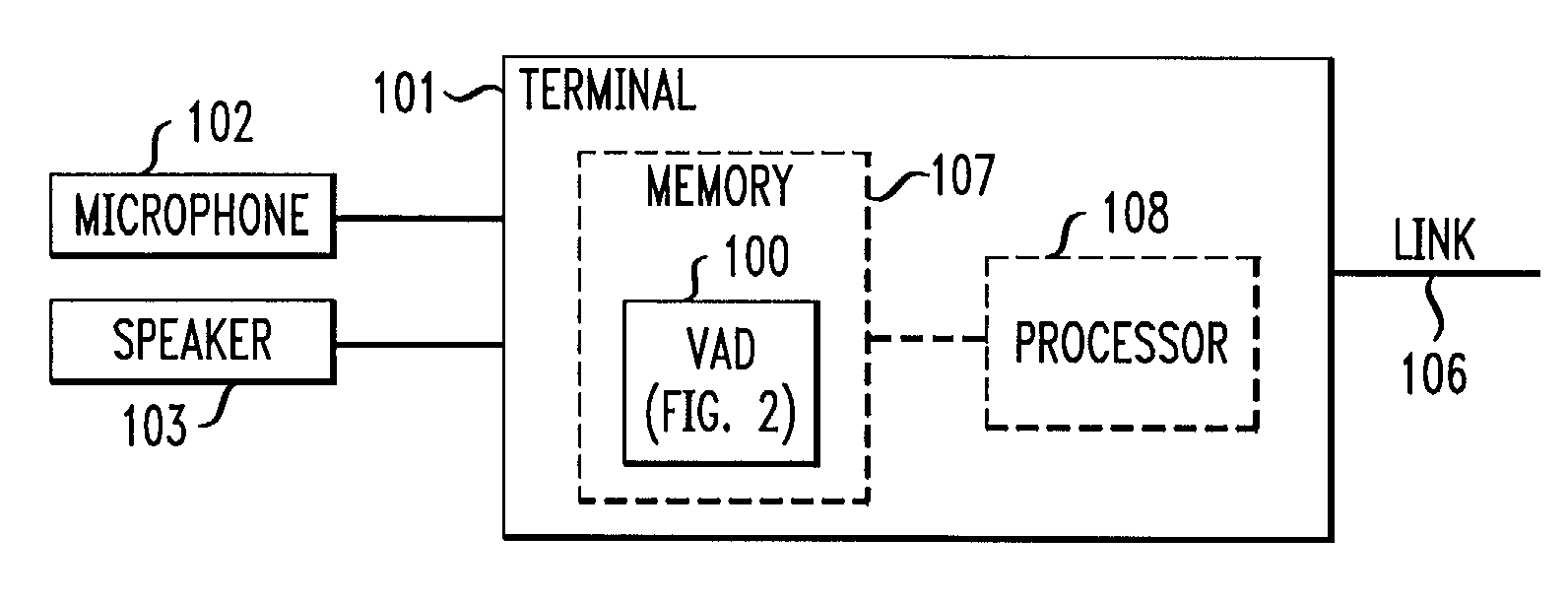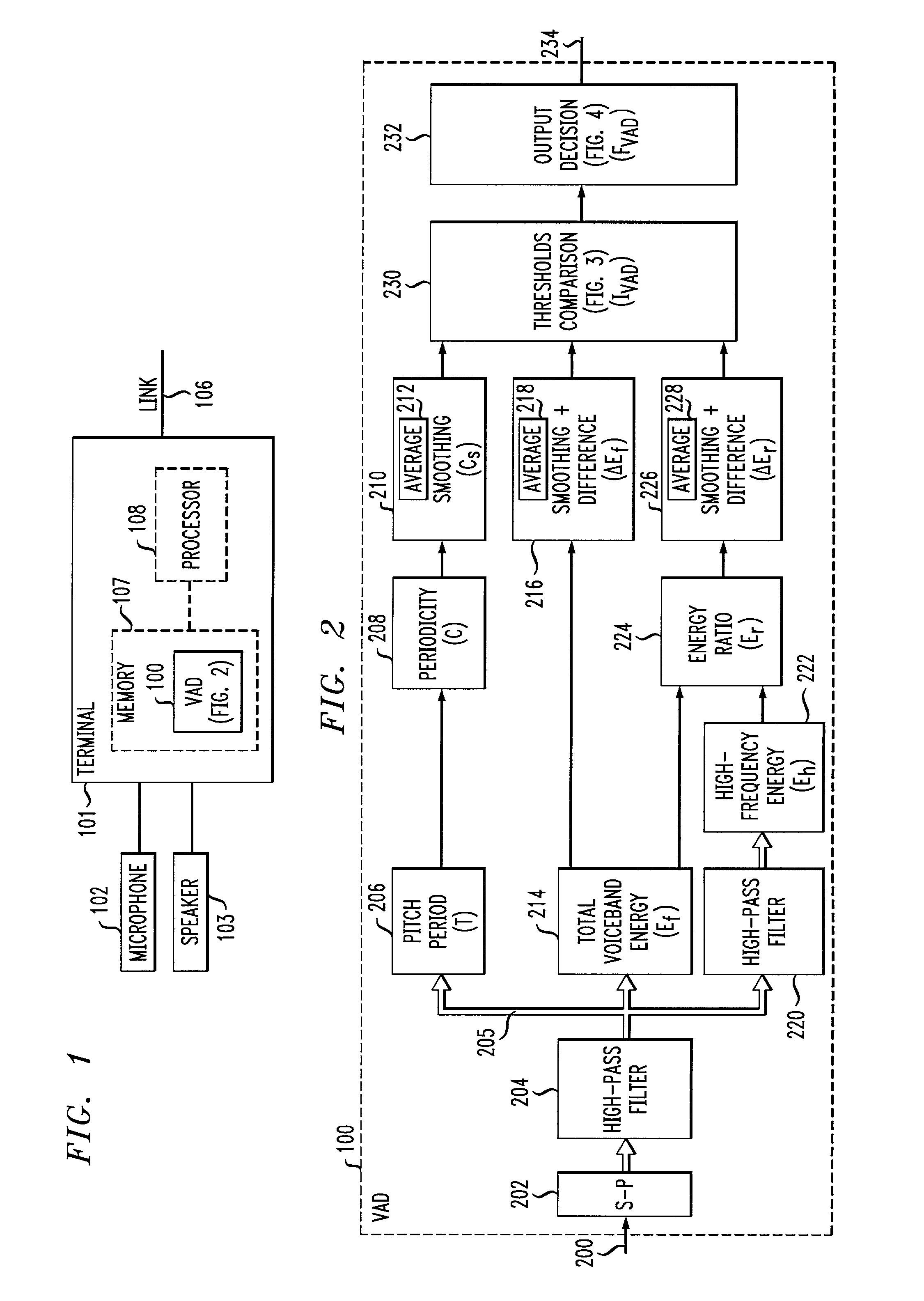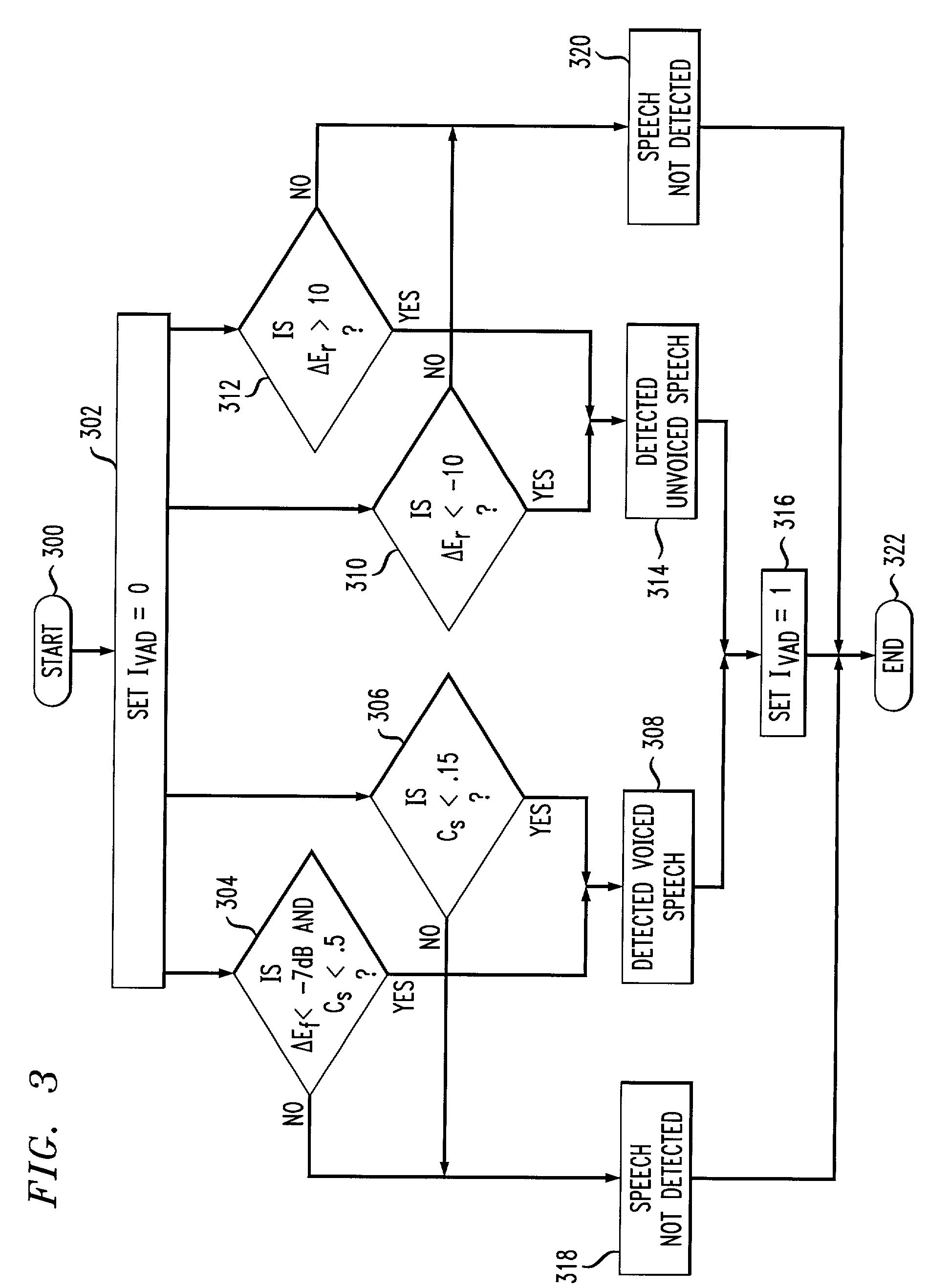Voice-activity detection using energy ratios and periodicity
a technology of energy ratio and periodicity, applied in the field ofsignal classification, can solve the problem that the initial decision on detection is not based on the total energy level, and achieve the effect of less susceptible, better distinguishing between speech and keyboard sounds, and more robust detection
- Summary
- Abstract
- Description
- Claims
- Application Information
AI Technical Summary
Benefits of technology
Problems solved by technology
Method used
Image
Examples
Embodiment Construction
[0016]FIG. 1 shows a communications apparatus. It comprises a user terminal 101 that is connected to a communications link 106. Terminal 101 and link 106 may be either wired or wireless. Illustratively, terminal 101 is a voice-enabled personal computer and VoIP link 106 is a local area network (LAN). Terminal 101 is equipped with a microphone 102 and speaker 103. Devices 102 and 103 can take many forms, such as a telephone handset, a telephone headset, and / or a speakerphone. Terminal 101 receives an analog input signal from microphone 102, samples, digitizes, and packetizes it, and transmits the packets on LAN 106. This process is reversed for input from LAN 106 to speaker 103. Terminal 101 is equipped with a voice-activity detector (VAD) 100. VAD 100 is used to detect voice signal received from microphone 102 in order to, for example, implement silence suppression and to determine half-duplex transitions.
[0017]According to the invention, an illustrative embodiment of VAD 100 takes ...
PUM
 Login to View More
Login to View More Abstract
Description
Claims
Application Information
 Login to View More
Login to View More - R&D
- Intellectual Property
- Life Sciences
- Materials
- Tech Scout
- Unparalleled Data Quality
- Higher Quality Content
- 60% Fewer Hallucinations
Browse by: Latest US Patents, China's latest patents, Technical Efficacy Thesaurus, Application Domain, Technology Topic, Popular Technical Reports.
© 2025 PatSnap. All rights reserved.Legal|Privacy policy|Modern Slavery Act Transparency Statement|Sitemap|About US| Contact US: help@patsnap.com



